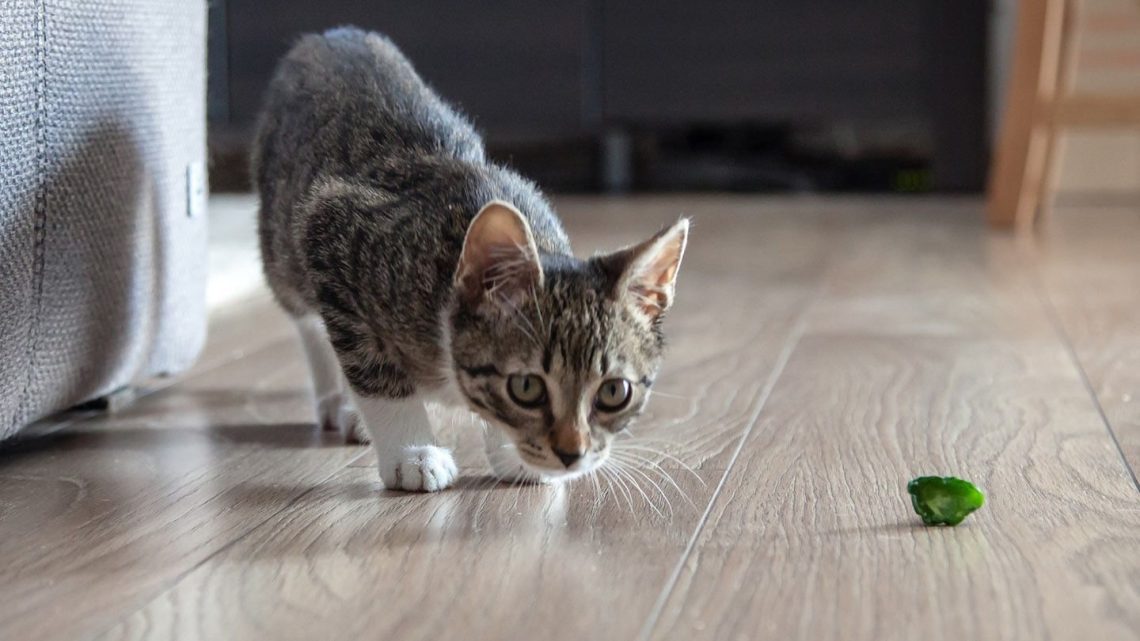
Easy cat training at home
To learn how to train a cat at home, start with the simplest steps – encouraging good behavior and preventing bad. But can a cat be trained the same way as a dog? Yes and no. Because cats are very independent animals, they may seem uninterested or uninterested in being with you. But that doesn’t mean they can’t be trained. All it takes is a little patience and understanding, and you can quickly teach commands to your kitten or older cat.
Contents
What do you want to train your cat?
First, decide what you would like to teach your cat as a beginner cat trainer, and then move towards this goal in small steps every day. However, before you start training your pet, think about what commands you will give her and what skills you want to achieve. Remember that you asked questions before: how to teach a cat to use a tray, how to ensure her calmness during trips to the veterinarian, how to stop scratching carpets or furniture? These are the tasks that you will solve during training.
Here are some common goals:
- Train your cat to litter.
- Teach your pet to come to you when you call her with a voice or gesture.
- Teach your cat to remain calm when you brush it.
- Teach her to interact with you, other people or animals.
- Teach your kitten to play with toys, with you or another cat.
- Teach the animal to remain calm during trips (during landing and driving a car).
There are many important reasons for training your pet. But most importantly, if you teach a cat to behave properly, it will not avoid people and other animals. Training is also important for your own peace of mind: if the pet is calm when you cut her nails, or during trips, neither you nor she will have a reason to worry. The better the cat is brought up, the closer your relationship with it.
Each training session should be short and natural.
Once you have determined which commands your cat needs to learn, start training. The first thing to consider is the fact that a cat’s attention span is shorter than yours. You should not expect that every time you train her, she will show interest in this. Stop training as soon as the animal gets tired.
Because some kittens are litter trained quickly (or maybe they already are before you bring them home), this kind of training can take quite a bit of time. But you may still need to bring your cat to the litter box for a while to remind her where it is. If you are teaching a kitten to play with toys (and with you), this training should be done in stages. Cats prefer to learn new toys on their own, which means that your role is only one thing – not to disturb the pet and at the same time not to leave her alone. Then, when she gets to know the new item, you can play with her.
Start Small
If you enjoy training your cat, you can start teaching commands right away. To achieve success, it is better to teach one thing at a time. Once your cat has mastered what you are teaching her, you can move on to the next exercise. For example, when you bring a kitten home, you can litter train it right away. When you’re done with that, start introducing the kitten to other pets, then teaching it to sit quietly while you brush its fur, and so on.
Don’t limit yourself to one area
Once your cat has learned the command, practice it around your home. If you introduce a kitten to animals already living in the house, bringing them together only in the living room, he may think that another animal lives only in this space. There is no problem if your other animal is a fish, but if a kitten is dating a dog, he should understand that he can meet her in any other places in the house.
As with the litter box, learning some commands should take place in different places in the house. When you litter train your cat, you may need more than one litter box. When you wean your cat from scratching carpets and furniture, you need to do this in different places in your house, as he will find such items in several rooms.
Engage other people

If it’s just you and your cat living in the house, you don’t have to worry too much about involving other people in the training process. And if you still want your cat to be sociable, shortly after you bring her home, invite friends or family members to chat with the new pet. However, remind them not to show their superiority during this introduction. As with your short sessions, give your pet free rein.
If you bring a kitten into a large family, it is extremely important to involve everyone in the process of training. There are many reasons why the whole family should be involved in training, but the most important is interaction and relationship building. After all, a cat will see familiar faces every day! All family members should be clear about the learning objectives and the methods you will use to succeed.
Use the reward system
Rewards for good behavior are a great incentive, especially during training. There are two types of rewards for your furry friend that you can try out. First, know that the cat will love any of your praise. Speak in a kind, cheerful voice and remind your cat that you are proud of her. Say, “What a nice kitty” and “Well done!” while stroking her fur so that she understands that these gestures mean that she did everything right.
Also, cats love treats. If suddenly your pet has done what you wanted her to do, give her some Science Plan food. To do this, you can use the “clicker” system. When your cat executes the command correctly, turn on the tool that clicks, and then give a treat – a signal that the command was correctly executed. If a cat hears this click every time it performs an action correctly, it will learn to do what you teach it to do well.
If it doesn’t work
Learning does not happen overnight, and sometimes the pet will make mistakes. Can you teach a cat to correct mistakes? Of course. But before you begin, you must come up with a plan to correct a mistake or put your cat on the right track when he doesn’t seem to want to. Punishment will not work here, because the animal simply does not understand why something does not work out for him. And because of the punishment, the cat can become isolated and just leave.
Never knock, shake hands or use physical punishment on a kitten during training. Keep your voice calm. If the animal feels threatened by you, the training will be useless, and the cat will be afraid of you.
If you need to correct an animal’s misbehavior (such as furniture scratching), try creating a short-term noise. It will not be useless if you repeat the same phrase every time: “Bam!” “Wow!” or “Meow!” The point is to get your cat alert and distracted from what it’s doing right now. Avoid words you use regularly, such as “no!” or “hey!”, as the cat may be confused by hearing them under other circumstances.
Cat training can be a fun activity for the whole family. Be patient and kind and you will reach your goal.





